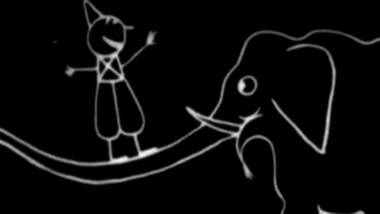Review – Animation: A World History Volume One: Foundations-Golden Age
Animation: A World History is the ambitious series of books by Giannalberto Bendazzi. Bendazzi is perhaps best know for his book Cartoons – One Hundred Years Of Cinema Animation, a tome that delved into the history of our beloved art form and was enjoyed by many for it’s appealing accessibility which invited readers to share in the authors enthusiasm for all things animated, giving a global and historic overview of the animation scene. In his latest series Animation: A World History, that same world is placed under the spotlight and split into three parts, Foundations – Golden Age, The Birth of a Style – The Three Markets and Contemporary Times. When collected the series of three books comprises of 1456 pages, making War and Peace look like a pamphlet. This review concentrates on the opening book in the series.
Animation: A World History Volume 1, Foundations – Golden Age sets the tone for the series. Concentrating on the pre-cinematic application of the art form right the way through to 1950. The book is part history, part encyclopaedia guiding the reader through animation as it developed whilst at the same time it travels the world to encounter animation events in order. Bendazzi does a wonderful job of contextualising the eras he presents, peppering world history alongside animation history to give an understanding of the situation these works were completed under. He also sets animation into periods which are defined by landmark animation events, the first period being the dawn of time through to the first screening of Fantasmagorie, which he pinpoints as the event that distinguished animation from live action. Whilst I often state the case that James Stewart Blackton’s film is the first animated film (perhaps because I’d like a fellow Yorkshireman to be held in such acclaim) , but Bendazzi puts forward a compelling argument to position Fantasmagorie as the more important of the two. Blackton isn’t left behind, far from it, the pages of this book are rich with information on the more well known figures (McCay, Fleischer, Messmer, O’Brien and many more) from the industries early years as well as information on those that you will never of heard of, presenting a thorough and appeasing read for any animation student, practitioner or researcher and anyone wishing to increase their knowledge and awareness of the early years of animation.
 I have tried my best to be objective whilst reviewing, however the text has an almost supernatural gift of taking my complaints and fixing them as I read onwards. It is truly bizarre, as if the book can read my mind and the pages ahead being written as a response to my quibbles. For example, when I read Bendazzi’s account on Great Britain I was a little upset that Anson Dyer didn’t get given the credit he was due, but low and behold in the next section of the book there are nearly three pages dedicated to him. Almost like an interactive experience the book would take all of my extremely minor quibbles and repair them, and it did so with every one of them. When Disney is specifically mentioned (a man who gets far too much praise already for my liking) he does get given the credit he is due, but crucially praise is also delivered to “The Ones Who Made the Magic” delivering a comprehensive list of those that elevated Disney to the top. With these considerations, any complaint I may have had about this book found themselves redundant.
I have tried my best to be objective whilst reviewing, however the text has an almost supernatural gift of taking my complaints and fixing them as I read onwards. It is truly bizarre, as if the book can read my mind and the pages ahead being written as a response to my quibbles. For example, when I read Bendazzi’s account on Great Britain I was a little upset that Anson Dyer didn’t get given the credit he was due, but low and behold in the next section of the book there are nearly three pages dedicated to him. Almost like an interactive experience the book would take all of my extremely minor quibbles and repair them, and it did so with every one of them. When Disney is specifically mentioned (a man who gets far too much praise already for my liking) he does get given the credit he is due, but crucially praise is also delivered to “The Ones Who Made the Magic” delivering a comprehensive list of those that elevated Disney to the top. With these considerations, any complaint I may have had about this book found themselves redundant.
The sections on each artist, studio or movement are packed with much more than a cursory overview or the type of information you could easily find online. This book delivers a nourishing account of the key figures, both lauded and forgotten that have refined animation from the start, strengthened by a welcoming tone that Bendazzi and his collaborators writing style delivers. The book delves into areas of animation that I had little prior knowledge on or interest in, such as animation created in Nazi germany, a subject which is handled delicately without weighing down the hindsight of history onto the practitioners shoulders.
I found reading the first volume of Gianalberto Bendazzi’s books to be a thoroughly enjoyable and enriching experience as it increased my own knowledge on animation’s early years immensely and added a lot more to the areas that I already knew about. This book is an absolute must for anyone interested in taking their studies in animation to the next level but is also written in a style that is accessible for a beginner, and though the price tag may be a little steep for the average reader I would implore any university, college or studio to consider the purchase as these books are a wonderful account of the art form to be cherished and referred back to again and again.
The book is available individually or as a pack of three which includes Volumes two and three of the series which will be reviewed individually here on Skwigly.
Items mentioned in this article:




